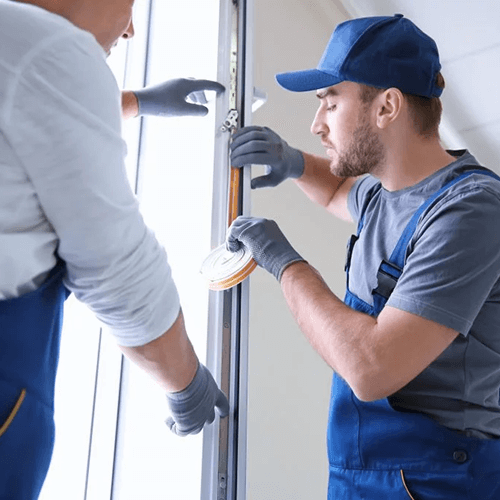
Having an energy-efficient building is crucial to saving money and being environmentally friendly. A new business is built to meet local codes and regulations. However, older buildings may require additional insulation to help with energy efficiency.
Business owners may forget to address the weatherstripping around their front doors. Any air leak contributes to up to 40% of your heating and cooling costs. Therefore, this small but crucial detail prevents a draft from floating through your entrance and combats excessive use of your heating and cooling system.
Although there are several types, weatherstripping is the name of products installed around windows and doors that seal gaps. This seal fits between your door and the doorframe, preventing warm air from escaping and cold air from entering the building. Its primary purpose is to to keep you comfortable and save you money.
Manufacturers make weather-stripping from various materials, including rubber, felt, foam, vinyl, and metal. Regardless of the material, it typically has an adhesive backing to stick directly to the doorframe. When the door is closed, you won't see any light or feel air leaking underneath the door.
Weather-stripping comes in various sizes to create the best seal. The most popular types of weatherstripping are as follows:
Regardless of what type of exterior door your business has, all doors benefit from the addition of weatherstripping.
Adding or changing the weatherstripping around your business door is a way to prepare for extreme temperatures. The United States Energy Department recommends choosing your materials carefully to give your building the best protection possible.
Different weather patterns are found across the United States. Therefore, it is ideal to choose materials that will withstand temperatures and wear and tear associated with your area.
Silicone, foam, and reinforced vinyl are some of the most durable weatherstripping materials. They all provide moderate to high levels of protection for your business doors.
Many people forget to inspect their weatherstripping, and if they do inspect it, what are the signs it's time for a change? If you can put a check beside any of these items, it's time to replace your weatherstripping:
These four signs are clear indicators that your weatherstripping needs a little attention.
The weatherstripping on your front doors undergoes more wear and tear than weatherstripping in other areas of your business.
An essential step in keeping your business energy efficient is to inspect your weatherstripping. It's best to complete an inspection several times a year, with the bare minimum of checking them in the autumn and spring.
Don't wait to do the review when you already feel a draft around the door. Some of the damage is done by this time, and your energy bills may be skyrocketing.
Instead, regularly take a few moments to feel around the door for any signs of an air leak. Check the interior and exterior portions of the door, and if you feel any air exchange occurring, it's time to replace the weatherstripping.
Dirt and debris can contribute to air leaks, too. While doing your visual inspection, take a wet rag and wipe down the door and weatherstripping material. Removing any dirt and debris may help it regain a proper seal, blocking out the airflow.
Anytime you see signs of damage or feel an air leak, it’s time to replace your weatherstripping. However, you'll still want to change the weatherstripping occasionally, even if you don't notice any problems.
A good rule of thumb is to replace it every few years. If you can't remember the last time you checked it, then it's probably time for a replacement.
Your business doors are a crucial part of your building. There is no reason they should cost you money by letting air seep in and out. If they are, CDF Distributors can help!
Contact our team to learn more about our commercial door services and how we can help your business.